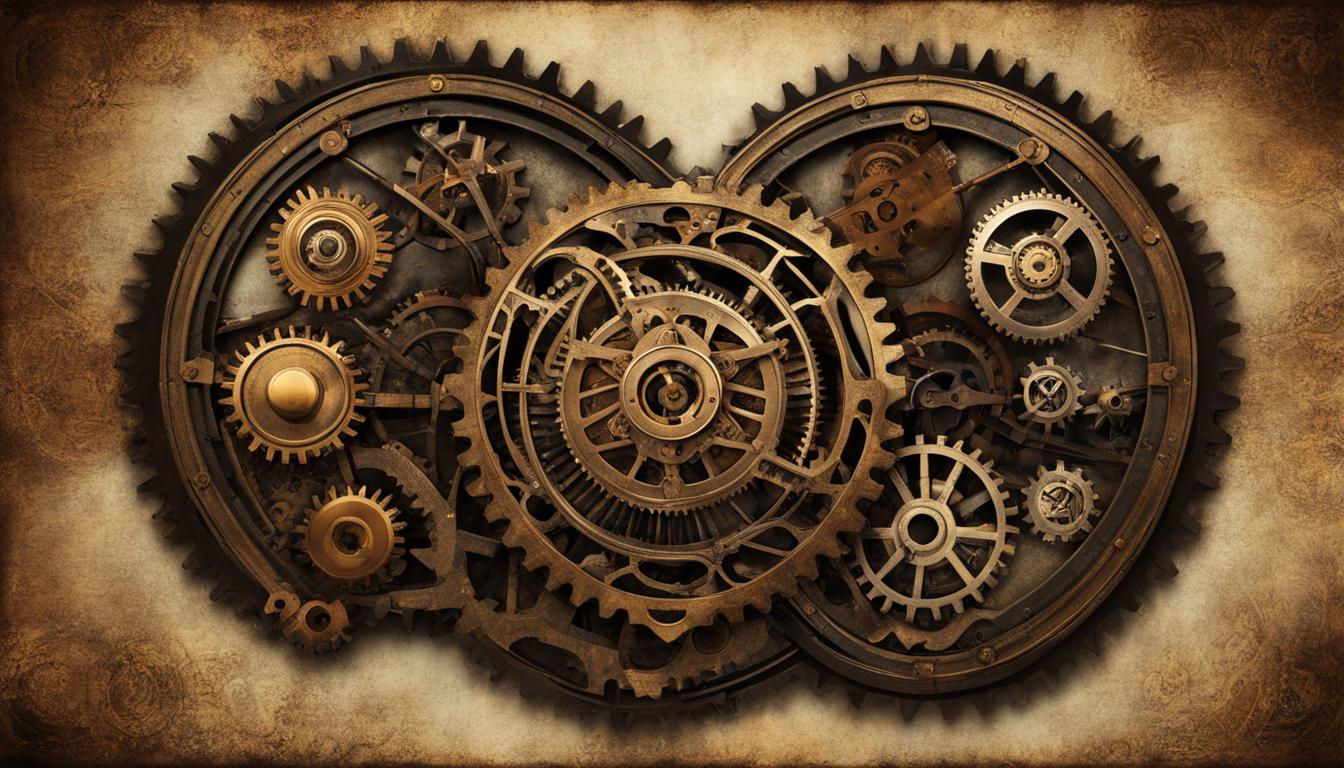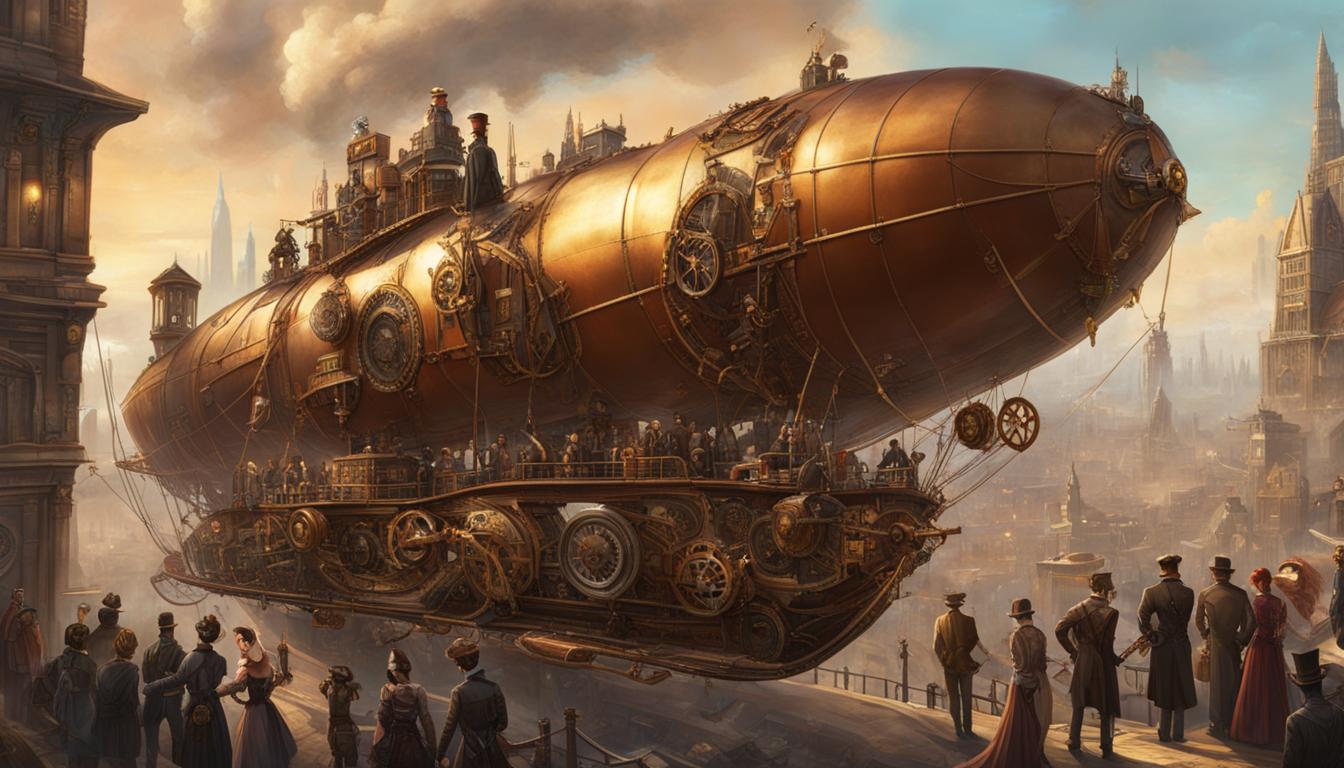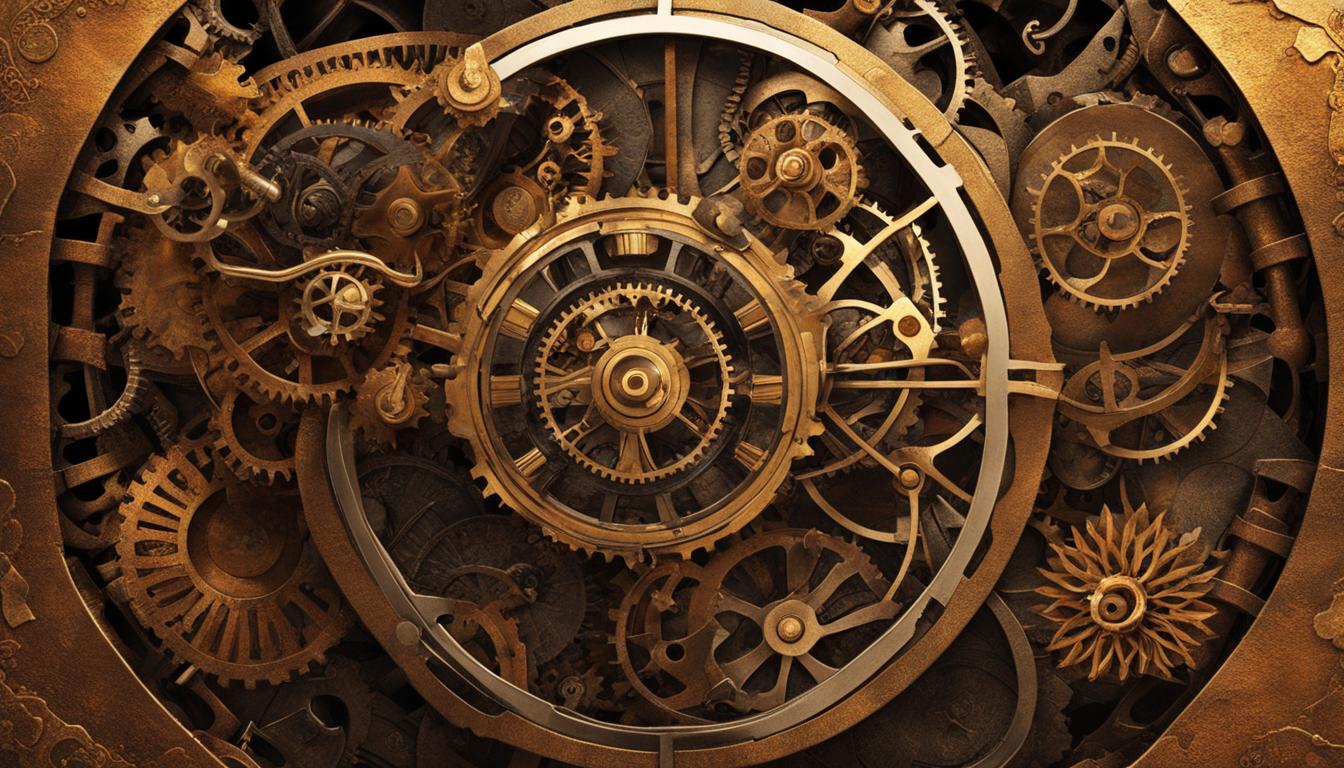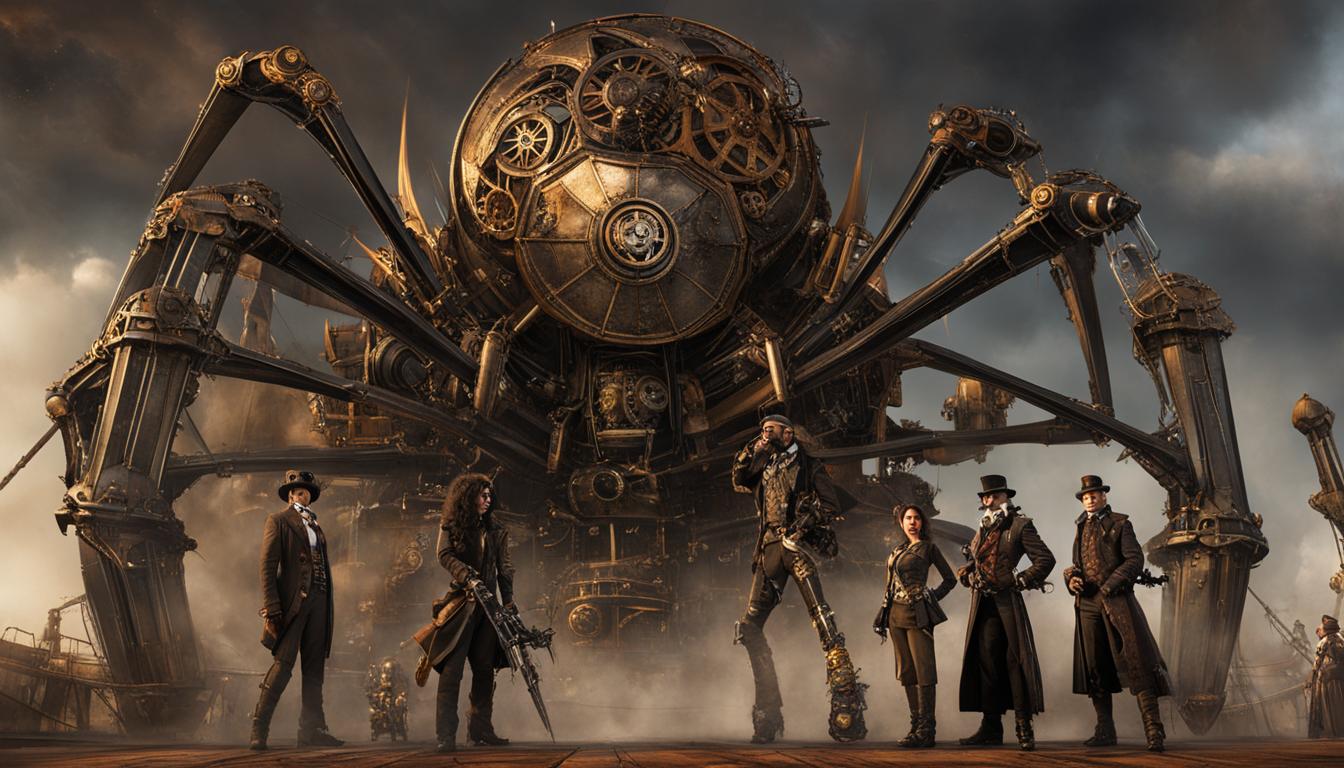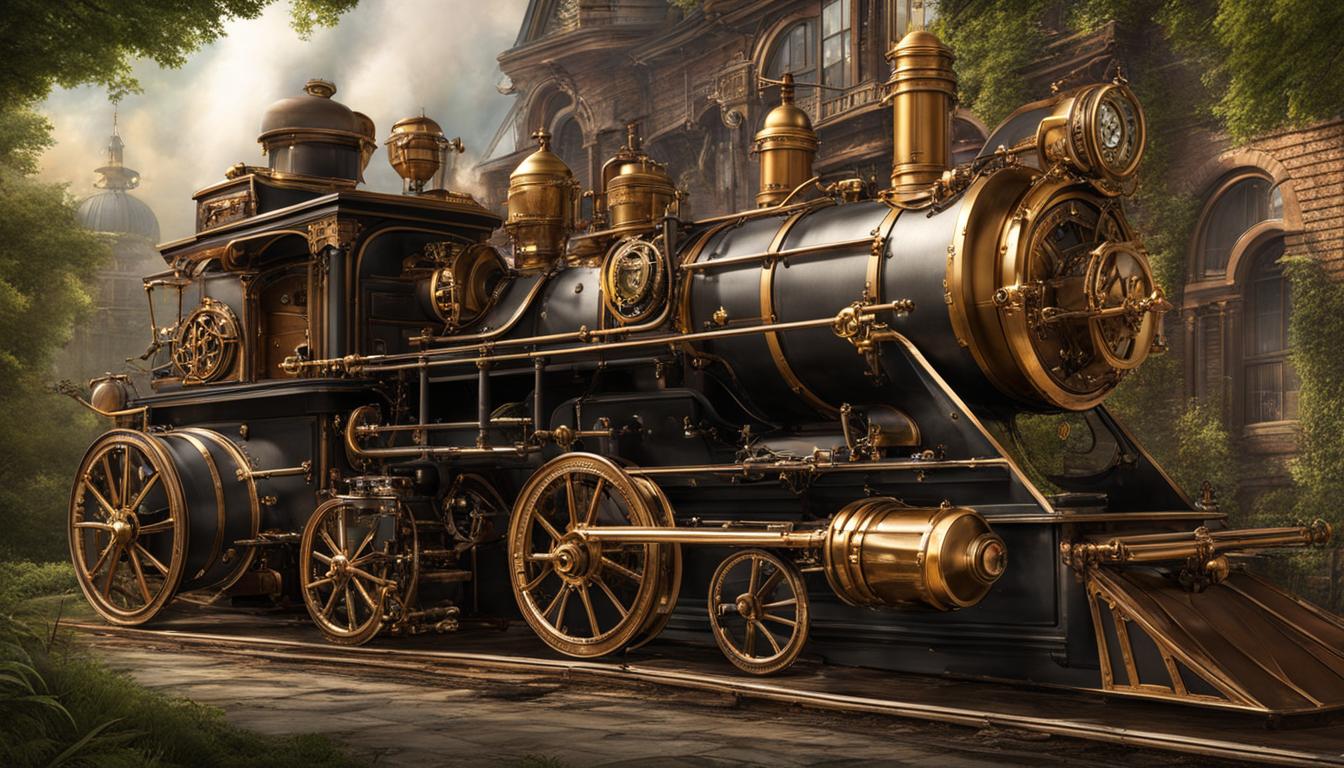Steampunk, a captivating cultural movement, envisions a world filled with retrofuturistic technology driven by steam and intricate clockwork gadgetry. But beneath the fantastical imagery lies a set of core beliefs that form the ideological foundations of steampunk. Dive into the mysterious depths of steampunk’s guiding principles and discover its unique perspective on history, technology, and the human spirit.
Key Takeaways
- Steampunk is a subculture that encompasses various expressions, such as literature, craft, film, and computer games.
- Its core beliefs are rooted in a yearning for a Newtonian-Laplacian worldview and a romanticized past where technology was not yet an enigma.
- Steampunk offers a unique perspective on design, incorporating elements of fiction, DIY, and appropriation, which have implications for HCI and interaction design.
- Steampunk aesthetics often draw on imagery associated with imperialism, raising questions about its potential for perpetuating or subverting imperialist ideals.
- The steampunk community should strive for a visibly subversive stance and actively challenge imperialist imagery.
A Journey into the Steampunk World
Steampunk is not just a subculture; it is an entire world filled with retrofuturistic wonders and Victorian aesthetics. Step into this realm, and you will find yourself surrounded by airships floating gracefully in the sky, extravagant clothing inspired by the elegance of the nineteenth century, and marvels of technology that blend the old-world charm with innovative ideas. If you have a taste for the visually extraordinary and a penchant for the mystical, the steampunk world will surely captivate your imagination.
One cannot talk about steampunk without mentioning its distinctive fashion. Embracing the opulence of the Victorian era, steampunk fashion incorporates elements of the neo-Gothic, neo-Victorian, and cyberpunk subcultures. Picture fantastical hats adorned with gears and goggles, corsets and waistcoats that accentuate the silhouette, and the allure of leather accessories. Steampunk fashion enthusiasts are masters of blending timeless elegance with eccentricity, creating a unique aesthetic that truly stands out.
The technology within the steampunk world is equally enchanting. Crafted from brass, copper, and steel, its gadgets and gizmos are powered by steam or intricate clockwork mechanisms. The visual appeal lies in the intricate details and the juxtaposition of vintage materials with futuristic functionality. Airships soar through the skies, propelled by steam-powered engines, while mechanized automatons amaze with their lifelike movements. Steampunk technology offers a glimpse into a world where imagination and innovation intertwine, giving rise to fantastical contraptions that push the boundaries of what is possible.
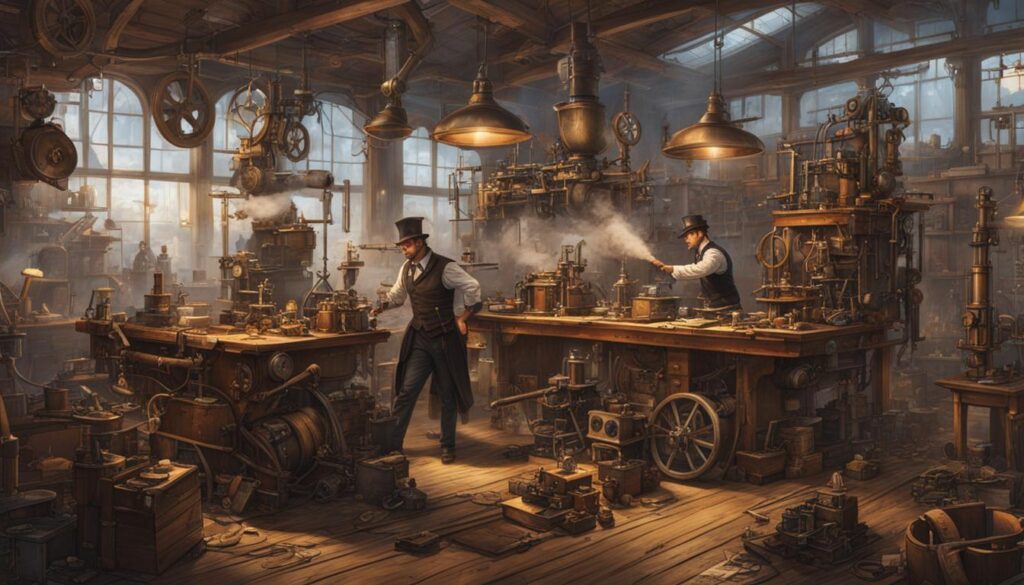
Key Figures in Steampunk Literature
| Author | Notable Works |
|---|---|
| Tim Powers | The Anubis Gates, The Stress of Her Regard |
| James Blaylock | Homunculus, Lord Kelvin’s Machine |
| K.W. Jeter | Infernal Devices, Morlock Night |
Steampunk as Design Fiction
Steampunk is not just a subculture or an aesthetic movement; it is also a design strategy that offers unique insights and implications for Human-Computer Interaction (HCI). Steampunk design draws upon the practices of DIY (Do-It-Yourself) and appropriation, allowing individuals to create their own retrofuturistic worlds and gadgets. This approach challenges traditional design principles and encourages a more hands-on and imaginative approach to user experience.
Design strategies in steampunk often involve repurposing and modifying existing objects, emphasizing craftsmanship, and incorporating elements of fantasy and adventure. It is a fusion of past and future, creating a rich visual and tactile experience for users. For example, a steampunk-inspired smartphone could be crafted from brass and leather, with gears and cogs that move when buttons are pressed.
The practices of DIY and appropriation in steampunk design offer valuable insights for HCI. By encouraging users to take an active role in the design process and providing them with the tools to customize and personalize their devices, steampunk design promotes a deeper engagement and sense of ownership.
Furthermore, the concept of design fiction is closely linked to steampunk. Design fiction explores hypothetical scenarios and allows designers to speculate about possible futures. In the context of steampunk, design fiction encourages designers to envision alternate timelines and worlds, where retrofuturistic technology is prevalent. This imaginative approach to design can inspire new ideas and challenge conventional thinking in the field of HCI.
Steampunk as design strategy offers a fresh perspective on HCI and interaction design. By embracing the DIY ethos, repurposing objects, and incorporating elements of fantasy and adventure, it provides a framework for creating innovative and immersive user experiences. As the steampunk community continues to experiment and push the boundaries of design, the implications for HCI will only become more profound.
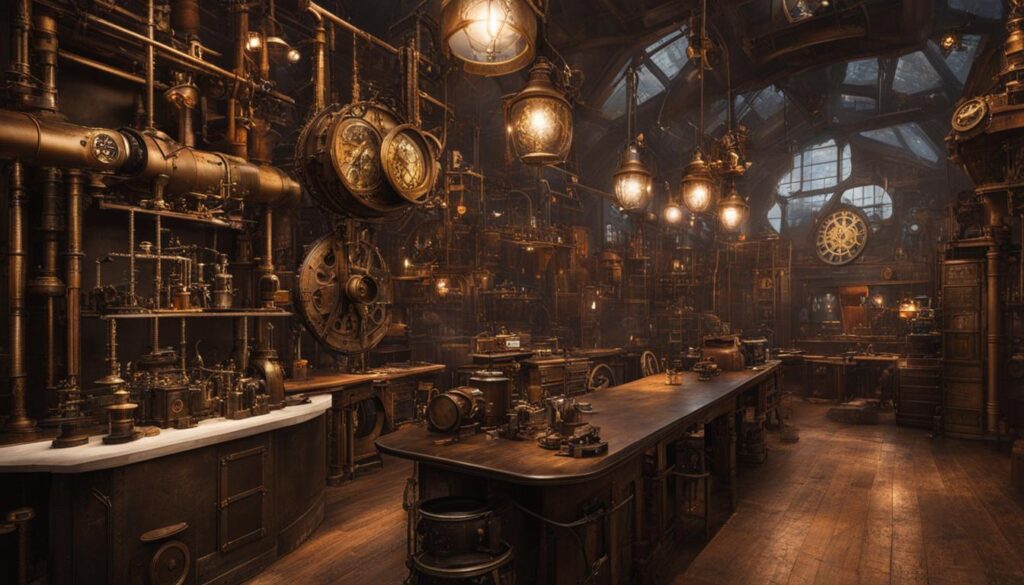
Table: Design Strategies in Steampunk
| Design Strategy | Description |
|---|---|
| DIY (Do-It-Yourself) | Encouraging users to actively participate in the design process and customize their own devices. |
| Appropriation | Repurposing existing objects and incorporating them into the design to create a unique aesthetic. |
| Craftsmanship | Emphasizing meticulous craftsmanship and attention to detail in the design of artifacts and gadgets. |
| Fantasy and Adventure | Incorporating elements of fantasy and adventure to create a rich and immersive user experience. |
The table above highlights some of the key design strategies in steampunk. These strategies serve as inspiration for HCI and interaction designers, allowing them to explore new approaches and push the boundaries of traditional design principles.
Steampunk and Imperialism
Steampunk, with its visually captivating aesthetics and fascination with the Victorian era, often incorporates imagery associated with imperialism. However, it is essential to critically examine whether steampunk perpetuates or critiques imperialist ideals. While individual steampunks may not intend to endorse imperialism, the larger steampunk subculture should actively consider ways to perform anti-imperialism and be visibly subversive.
The subversive elements in steampunk can be seen as a response to the historical context in which the movement emerged. Steampunk literature, for example, has offered critical perspectives on imperialism, exploring themes of colonialism, exploitation, and resistance. These critiques challenge the glorification of imperialism and encourage steampunks to question and subvert the portrayal of imperialist symbols and narratives.
Steampunk provides a unique space for reimagining history and technology, and it is crucial that the community embraces its potential to challenge dominant power structures and narratives. By actively engaging in anti-imperialist practices and exploring subversive themes, steampunks can contribute to a more inclusive and socially conscious movement.
Steampunk’s potential for subversion goes beyond its literature. The visual and fashion aspects of steampunk can also be utilized to challenge imperialist imagery. Steampunks can reimagine and subvert traditional symbols of imperialism, creating alternative narratives that highlight resistance and empowerment. Through their creativity and design choices, steampunks can actively participate in the ongoing critique and deconstruction of oppressive systems.
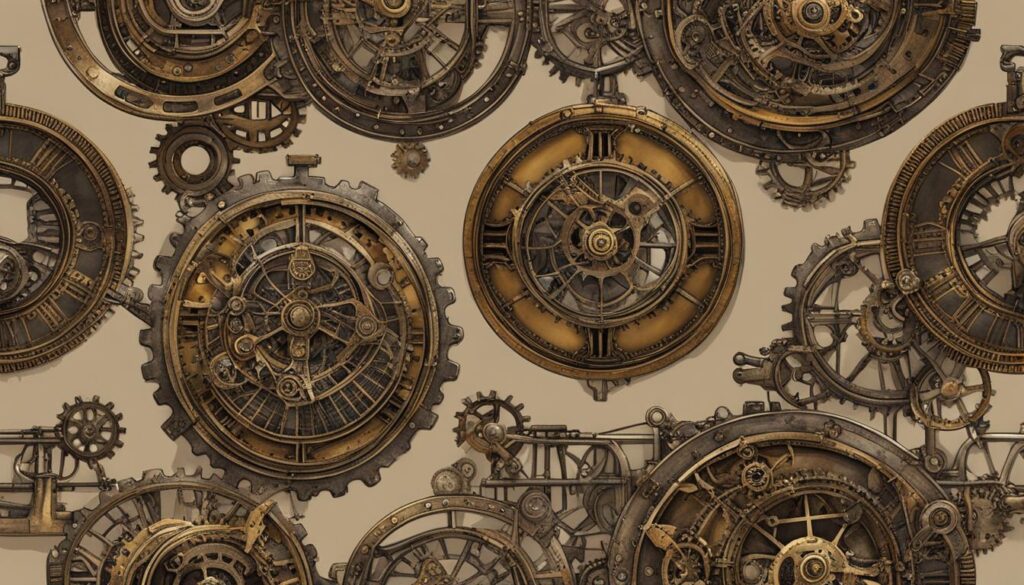
The Role of the Steampunk Community
The steampunk community collectively plays a significant role in shaping the movement’s values and practices. By fostering open discussions, workshops, and educational initiatives, the community can encourage critical engagement with the topic of imperialism. It is crucial to create spaces where members can explore the complexities and implications of imperialism in steampunk and work towards a more inclusive and socially conscious subculture.
Conclusion
The steampunk movement finds its ideological roots in a longing for a bygone era and a rejection of the relentless pursuit of modernity. With its fascination for Victorian aesthetics and technology, steampunk serves as a moral foundation for those seeking a different perspective on design and cultural expression.
Steampunk’s philosophical backbone stems from a desire to rediscover the intricacies of a Newtonian-Laplacian worldview, where steam-powered contraptions and clockwork mechanisms held sway. This admiration for the past, however, does not bind the movement to a fixed canon. Steampunk embraces hybridity and cross-cultural blending, challenging any essentialist approach to its definition.
As a subculture, steampunk extends beyond literature, craft, film, and computer games, incorporating elements of fiction, DIY, and appropriation. This unique convergence of ideas has significant implications for Human-Computer Interaction (HCI) and interaction design, offering valuable design strategies for envisioning alternative worlds.
However, even within the enchanting world of steampunk, one must not overlook the presence of imperialist imagery. While individual steampunks may not intend to perpetuate imperialism, the community as a whole should actively engage in challenging and subverting these symbols. By examining and critiquing the portrayal of imperialism in steampunk, the subculture can transform itself into a visibly subversive force.
FAQ
What is steampunk?
Steampunk is a cultural movement that envisions an alternate timeline with retrofuturistic technology powered by steam and intricate clockwork gadgetry.
What are the core beliefs of steampunk?
The core beliefs of steampunk can be traced back to a yearning for a Newtonian-Laplacian worldview and a romanticized past where technology was not yet an enigma.
How does steampunk express itself?
Steampunk is a subculture that encompasses various expressions, such as literature, craft, film, and computer games.
What are the visual elements of steampunk?
Steampunk is characterized by airships, outlandish clothing reminiscent of the Victorian era, and retrofuturistic technology.
Who were the early influencers of steampunk?
While Jules Verne and H.G. Wells are often cited as early examples of steampunk, their works lack the retrofuturistic and alternate history elements that define the genre.
How does steampunk intersect with design practice?
Steampunk can be understood as a design movement that provides a model for realizing an ideological and imagined world through design practice. It offers valuable design strategies and implications for Human-Computer Interaction (HCI).
Does steampunk perpetuate imperialist ideals?
Steampunk aesthetics often draw on imagery associated with imperialism, but it is important to question whether it is anti-imperialist or if it perpetuates imperialist ideals. The steampunk community should actively consider ways to perform anti-imperialism and be visibly subversive.
What are the ideological foundations of steampunk?
The ideological foundations of steampunk are shaped by a yearning for a bygone era, a rejection of modernity’s emphasis on newness, and a fascination with the aesthetics and technology of the Victorian era.

